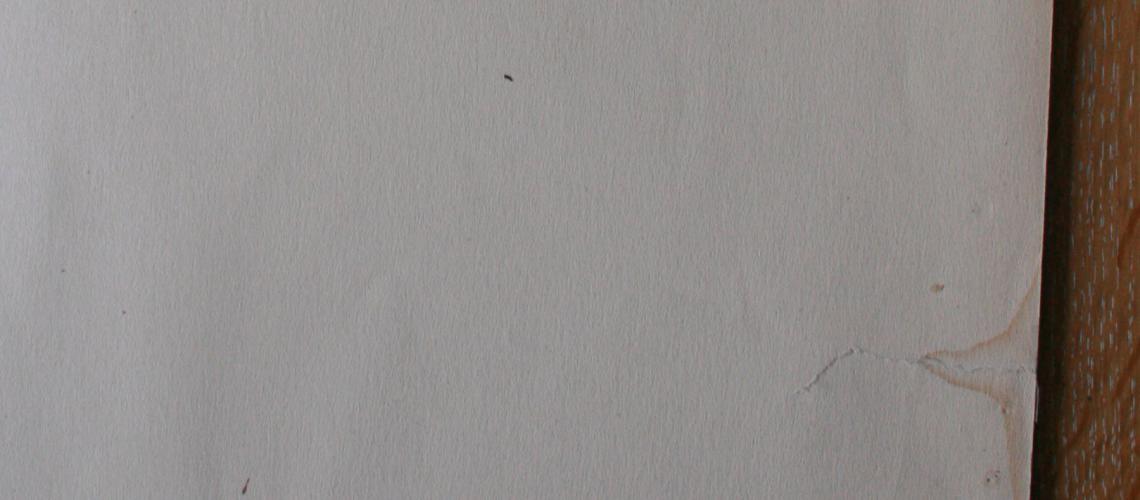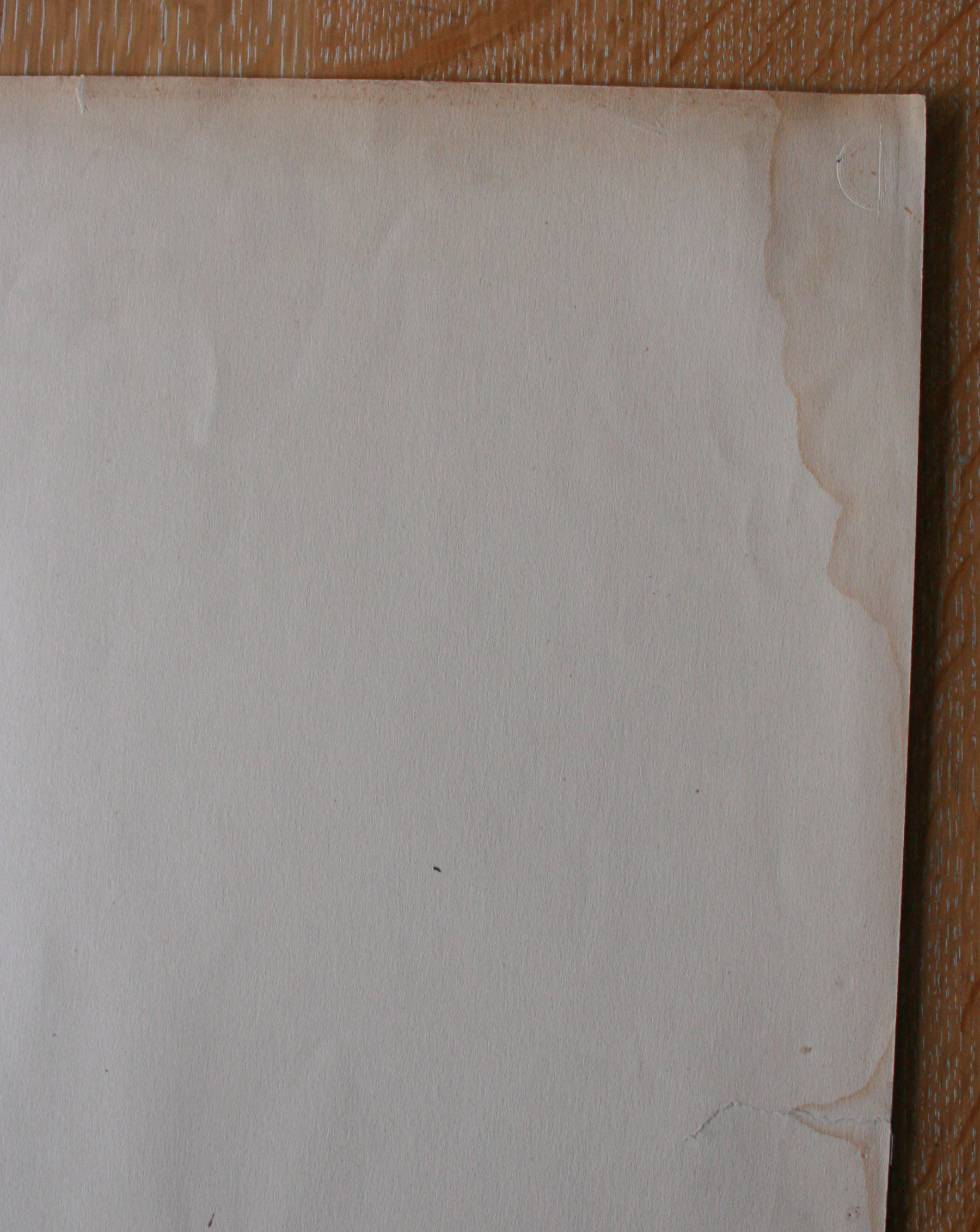The appearance of water stains is a special issue in paper restoration.
Visually it is a strong impairment of the object, in graphics, for example, although the paper is not damaged in its structure.
Depending on their origin, water stains can have different appearances.
Lignocellulosic papers often show a dark bordered, bright flare. Yellowing and soiling in the area of water entry are washed out. In the case of woodfree papers, however, surface dirt is removed and deposites on the water edges, where it dries up and forms a clearly visible borderline. [1]
Possible measures to remove or reduce and improve the appearance
Traces of accidental water entry can not always be completely removed. Mostly, however, a reduction of these can be achieved.
It is important to perform a test on the affected object before performing an aqueous treatment. This is essential to clarify wether colorants, for example stamps and inks, are bleeding out during the treatment or if other damages could occur, as it comes into contact with water! Therefore, you should first consult a competent restorer.
Bath in water or vinegar/ acetic acid
In this regard, Wächter proposes to flush the paper in water or vinegar. According to his publication, he takes three parts of water and adds one part of wine vinegar (probably better acetic acid). The object is placed in cold or warm water for several hours. Weakly visible water stains are flushed out in this way, as well as acids or yellowish brown discoloration (lignocellulosic papers), contained in the paper. [2]
The first video below shows a simple way with simple tools and plain water. The second video shows a paper conservator from Wimpole Estate Book Conservation removing water stains from a book.
Powdered citric acid
Hardship cases can be moistened locally and additionally sprinkled with powdered citric acid, which must finally be washed out.
Dab with brush
After or during the water bath you can try obliterating water stains or gently dab on it.
Vacuum table
If you have a vacuum table, place the moist sheet on it if no improvement has occured so far. Instead of pure water, ethanol can be added to the water and then gently spotted on the object with the brush. Be careful because new water stains can be caused by using too much of the solution.
Vaporization
With a vaporizer it is possible to push water stains out of paper, but sometimes small drops of water fall off the tool onto the paper and cause damage, so be careful while using it!
Dipping watering system
Schempp offers a dipping watering system which is suitable for mass treatments. The sheets are placed vertically in sieve bags and only after subsequent air drying, they become removed. [3]
Bleach
Last, but not least the bleach with potassium permanganate, for example: It can also be used to improve the visual impression. Try to choose the gentlest possible bleaching process for your object.
References
[1] Damage and stains, caused of water (German):
http://www.papierrestaurierung.com/Praevention/Wasserschaeden/
[2] Wächter, Otto: Restaurierung und Erhaltung von Büchern, Archivalien und Graphiken, 3. Aufl., 1982.
[3] Damage symptoms and their treatment options (German): http://www.schempp.de/restaurierung/schaden.php



